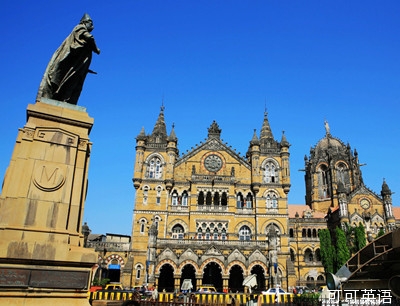Books and Arts; Book Review;New fiction from India;Lotus-eaters;
文藝;書評;印度新小說;醉生夢死的人;
Narcopolis. By Jeet Thayil.
《Narcopolis》,Jeet Thayil著。
The official history of Mumbai attributes the city's rise to its natural harbour and textile industry. But before cotton mills came to dominate the landscape, Mumbai's merchants grew fat exporting opium to China. The city's main schools of art and architecture and its best public hospital are named for a pioneer of the trade, Jamsetjee Jeejeebhoy, as is a 2.4km elevated road that cuts through the old city.
官方史記載孟買的崛起源于天然港口和紡織業(yè)。但在印度紡織廠占主導(dǎo)地位前,孟買的商人已經(jīng)從向中國出口鴉片的貿(mào)易中獲得豐厚利潤。這座城市的藝術(shù)建筑設(shè)計學(xué)院和一流的公歷醫(yī)院就是以一個貿(mào)易先驅(qū)者詹姆塞特吉·吉吉博伊(Jamsetjee Jeejeebhoy)的名字命名的,,他也出資修建一條2.4千米的高架道路,橫穿這個古老的城市。

In the shadow of that viaduct lies Shuklaji Street, Mumbai's last connection with opium. “It wasn't much of a street,” notes Dom Ullis, the narrator of Jeet Thayil's debut novel, “Narcopolis”, but it was the epicentre of vice: prostitutes, drug dealers and petty criminals. Dom arrives here to partake in Mumbai's (Mr Thayil calls it Bombay) love affair with opium just as it is drawing to a close, some 150 years after it started.
Shuklaji街就座落在這座高架橋附近,它是孟買與鴉片的最后聯(lián)系。“它不像一個街道” Jeet Thayil處女作《Narcopolis》的主人公說。因為這里是罪惡中心:嫖娼,毒品交易,小偷小摸盛行。Dom Ullis講述孟買與毒品的淵源,仿佛置身于150年前孟買毒品伊始到結(jié)束的場景。
Dom drifts in and out of Rashid's, an old-fashioned opium den where pipewallahs prepare your smoke for you and serenity prevails. Rashid's is a clearing house for characters and stories. Dom meets Rumi, a wife-beater and failed businessman; he brings Xavier, an angry old artist; he befriends Dimple, a eunuch prostitute who in turn tells the story of Mr Lee, a Chinese exile. Then there is Rashid himself, who watches—and fruitlessly resists—as his graceful world of opium-eaters is rendered obsolete by the nightmare of low-grade heroin. Mumbai forgets opium as those who loved it either die or burn out their brains.
Dom漫步在一個老式的鴉片窩點拉希德, 在那里有人為你準(zhǔn)備好煙卷,寂靜襲來。拉希德是各色人物進出和講述眾多故事的場所。Dom遇到魯米,魯米實施家庭暴力,曾經(jīng)經(jīng)商卻一敗涂地;DOM引薦了一個憤怒的老藝術(shù)家澤維爾;并和男妓 Dimple成了朋友,Dimple講述一個遭流放的中國人李先生的故事。還有房子的主人拉西德——徒勞的抵抗——當(dāng)看著自己優(yōu)雅的鴉片世界被夢幻般劣質(zhì)海洛因遺忘。那些吸食鴉片的人或者死亡或者沖昏了頭腦,孟買也被鴉片遺忘。
A reformed addict, Mr Thayil has had personal experience with the world he describes. But he is also a published poet, who wields his words with care. His efforts are there to be seen. Admirably, Mr Thayil resists the urge to insert himself into the narrative. Dom Ullis is mostly absent, giving the reader nothing. The only way to keep track of the book's chronology is through the conversations. New cars, soft drinks and coffee shops indicate the passage of time as India's economy creaks open. Ugly, brutal references to Muslims mean that 1993, when the city erupted in religious riots, has left its scars. And if it's ecstasy and MDMA, it must be 21st-century Mumbai.
一個遭改造的毒梟Mr Thayil,用自己的親身經(jīng)歷描述這個世界。他也是位有名望的詩人,小心翼翼的駕馭自己的文字。他的努力有目共睹。備受贊譽的是,Mr Thayil抑制著插進敘述著的欲望。因Dom大部分時間不在場 ,讀者無法追溯時間。唯一可以曉知書中年代的是書中的談話。隨著印度經(jīng)濟開放,新車,飲料和咖啡店暗示時光的流逝。書中提及丑惡暴力的穆斯林時,意味著1993年爆發(fā)了宗教暴亂,并給穆斯林帶來傷痕。而當(dāng)書中提到迷幻藥和搖頭丸時,那一定是21世紀(jì)的孟買。












